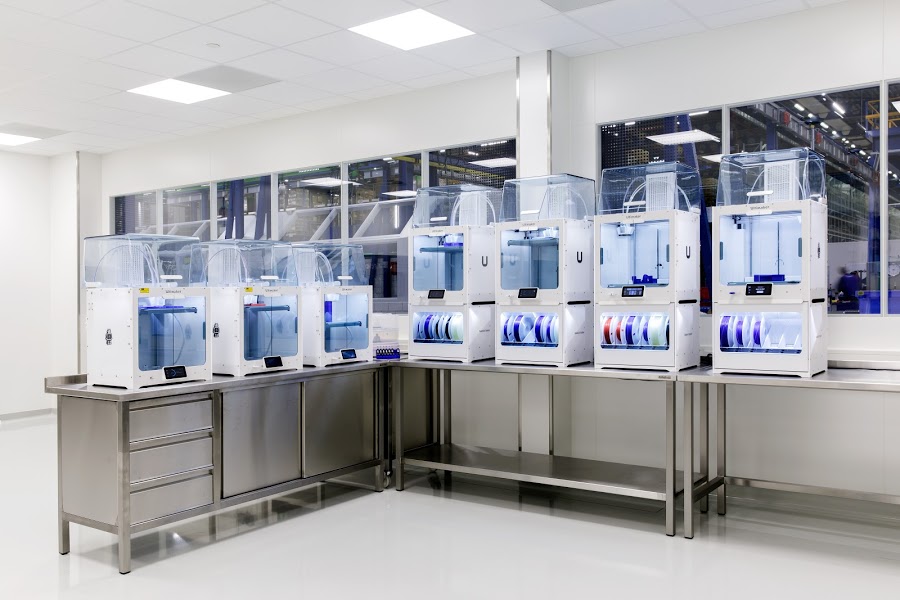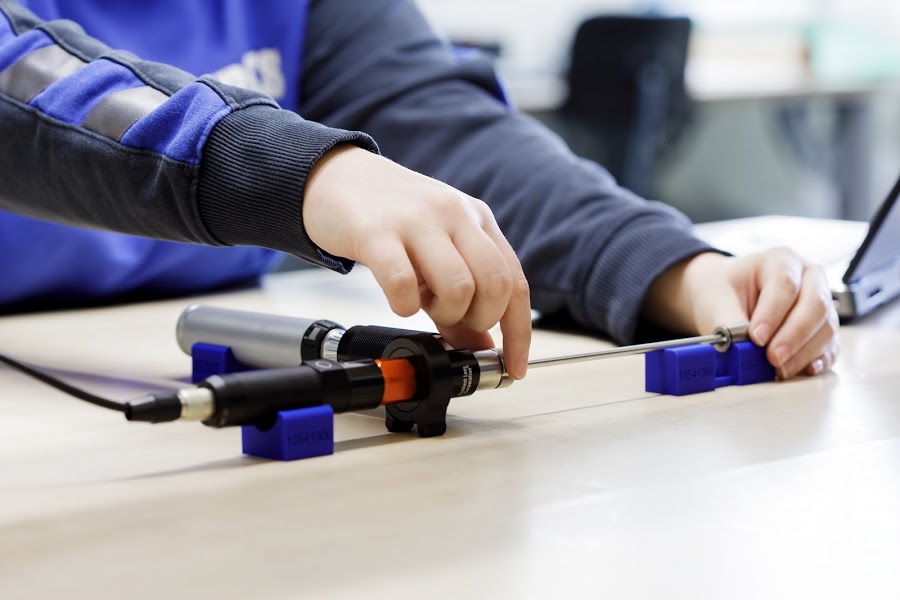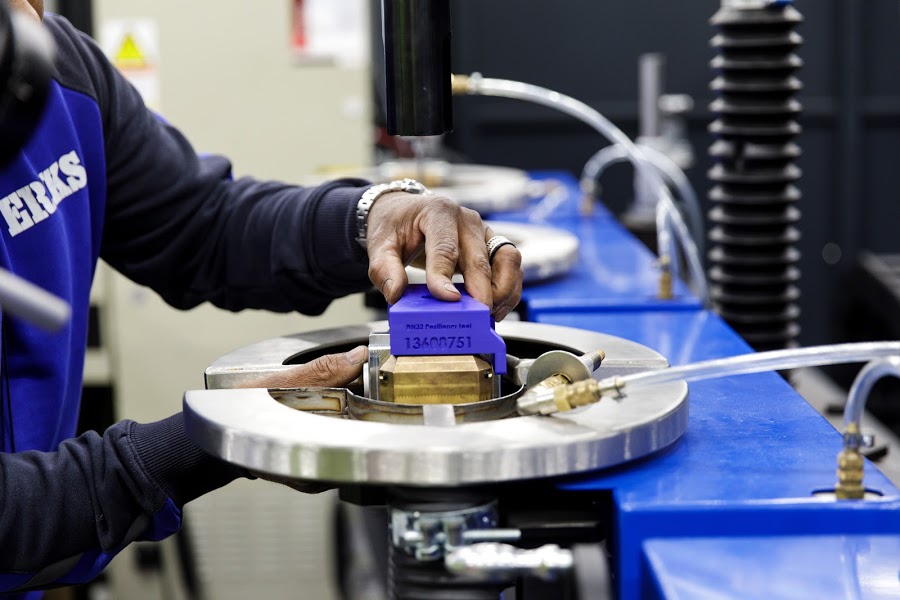After the consumer 3D printing bubble of 2014, the market for desktop 3D printers was completely shaken up as manufacturers looked for new ways their systems could be used for industrial applications. Ultimaker was successful in finding large customers, such as Volkswagen Autoeuropa and Airbus, who took on desktop extrusion technology to support their large production operations. The Dutch company has now found another significant client in ERIKS, a global technical parts and services provider.
With 7,500 employees, ERIKS is an SME that distributes mechanical engineering components—including such parts as O-rings, valves, transmissions—to over 200,000 customers in the chemical, food, pharmaceutical, biotechnology, refining, and metal sectors. Out of its more than 300 locations, ERIKS chose its production facilities in Alkmaar, The Netherlands to deploy six Ultimaker S5 Pro Bundles to support its operations.
ERIKS has already offered rapid prototyping for rubber-like and plastic products using polymer jetting technology. The company then began using 3D printing in-house in 2019 for the fabrication of production aids, with which it claims it was able to save over €350,000. The addition of the Ultimaker printers will allow the company to work with its clients to design and manufacture goods. Sander Splinter, managing director at ERIKS Netherlands, explains:
“By combining our industry, product and application knowledge with the accessible and reliable 3D printing solutions from Ultimaker, we can fully support our customers in co-engineering parts with more speed and design freedom when using injection moulding. In 2019, we managed to save over 350,000 euro only by implementing 3D printed production aids and eliminating safety hazards in our own facilities. We are now gradually helping our customers to benefit from 3D printing, by advising them based on data analysis on which parts are suitable to print, but also through site-scans at their facilities. Based on these visits we can co-engineer and print the identified applications on the Ultimaker S5 Pro Bundle, guaranteeing quality, reproducibility and reliability of the parts according to their specific industry standards.”
The Alkmaar location also includes a clean manufacturing facility with EC1935/2004 compliance for food-safe parts. In addition to dedicated clean production areas, the facility has a large-scale ISO Class 6 cleanroom. While it currently meets European food safety requirements, ERIKS is working to earn FDA compliance and certifications for 3D printing. This would make it possible for the company to 3D print parts and tools that can be used in food production sites.
Food production is among the many industries adopting additive manufacturing (AM). For instance, Kaak Group, another Dutch company, manufactures automated bakery systems for which it now uses MetalFAB1 3D printers from Additive Industries. Food related parts it has printed so far include an optimized dough cutting knife, a dough-folding spatula, and a robotic holder for a pizza cutter. The company was so taken with 3D printing that it acquired an even more advanced MetalFAB1 system and spun out an additive manufacturing-focused service company called K3D. It is therefore easy to imagine how some of these components could first be identified, designed and prototyped in such a space as the ERIKS clean manufacturing facility before going to production.
More immediately, one can picture ERIKS customers first identifying methods for producing tools, such as jigs and fixtures, for their production operations. Jos Burger, CEO at Ultimaker, pointed out that, according to the company’s own 3D Printing Sentiment Index, only 35 percent of companies have adopted AM.
At this point in the development of 3D printing, there is little reason that nearly every sizeable manufacturing company shouldn’t at least use desktop printers for prototyping, if not the production of tools. ERIKS is, therefore, in a prime position to introduce its clients to the technology so that they might in turn deploy it in-house.
While this deal with Ultimaker could increase the speed of AM adoption across industries, it is obviously a beneficial deal for Ultimaker, as well. With ERIKS using the S5 to aid its customers in their projects, the company would naturally suggest Ultimaker products when the time comes for them to purchase their own machines.
Eventually, those same customers might even scale up their own 3D printing capabilities, either turning to service providers or purchasing industrial production machines to manufacture 3D-printed end parts. If that turns out to be the case, one wonders if ERIKS will ultimately establish its own AM production facilities or if Ultimaker will find itself working with or even being acquired by an industrial system manufacturer.
Subscribe to Our Email Newsletter
Stay up-to-date on all the latest news from the 3D printing industry and receive information and offers from third party vendors.
You May Also Like
Precision at the Microscale: UK Researchers Advance Medical Devices with BMF’s 3D Printing Tech
University of Nottingham researchers are using Boston Micro Fabrication‘s (BMF) 3D printing technology to develop medical devices that improve compatibility with human tissue. Funded by a UK grant, this project...
3D Printing Webinar and Event Roundup: April 21, 2024
It’s another busy week of webinars and events, starting with Hannover Messe in Germany and continuing with Metalcasting Congress, Chinaplas, TechBlick’s Innovation Festival, and more. Stratasys continues its advanced training...
3D Printing Webinar and Event Roundup: March 17, 2024
It’s another busy week of webinars and events, including SALMED 2024 and AM Forum in Berlin. Stratasys continues its in-person training and is offering two webinars, ASTM is holding a...
3D Printed Micro Antenna is 15% Smaller and 6X Lighter
Horizon Microtechnologies has achieved success in creating a high-frequency D-Band horn antenna through micro 3D printing. However, this achievement did not rely solely on 3D printing; it involved a combination...
































